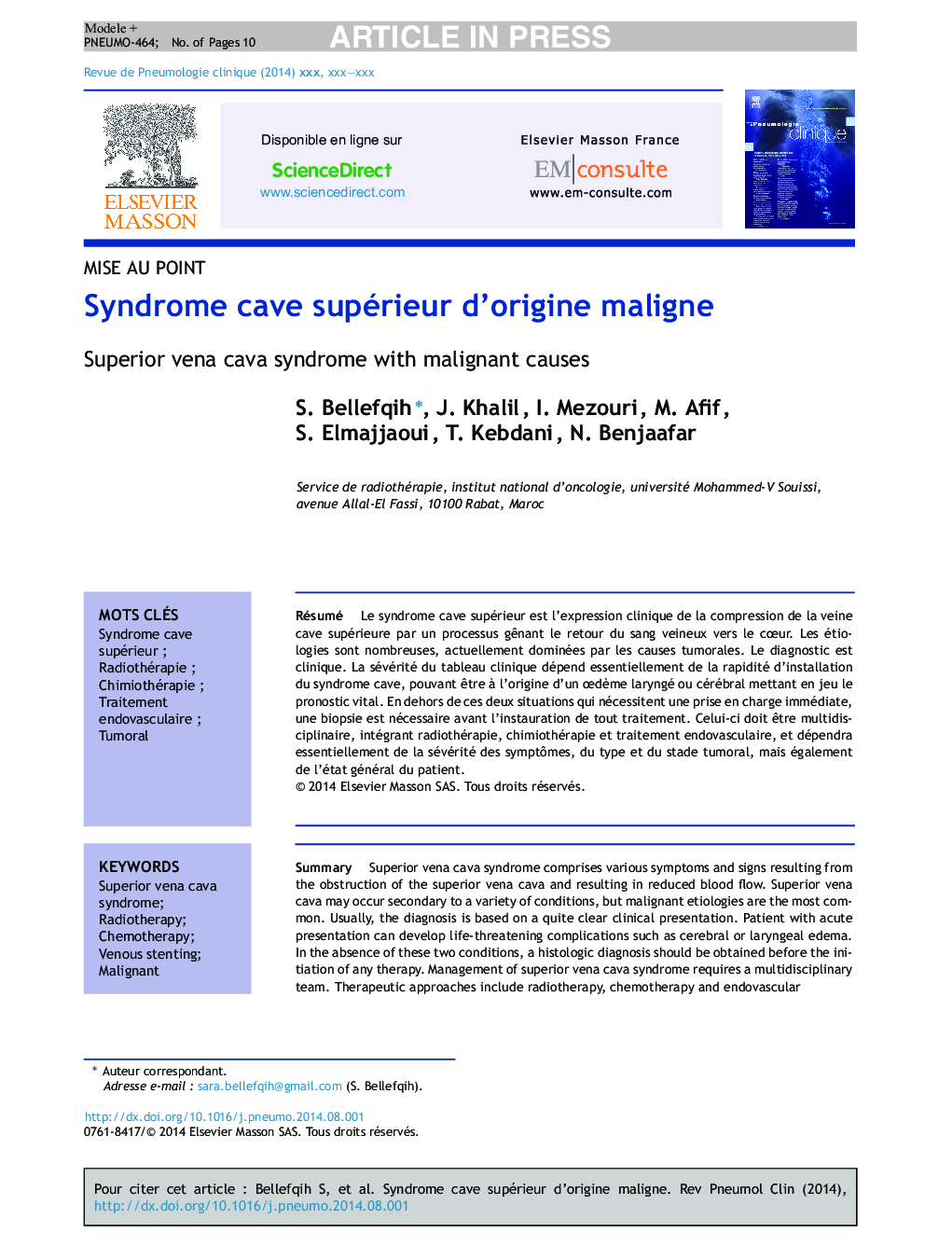| Article ID | Journal | Published Year | Pages | File Type |
|---|---|---|---|---|
| 3419396 | Revue de Pneumologie Clinique | 2014 | 10 Pages |
Abstract
Superior vena cava syndrome comprises various symptoms and signs resulting from the obstruction of the superior vena cava and resulting in reduced blood flow. Superior vena cava may occur secondary to a variety of conditions, but malignant etiologies are the most common. Usually, the diagnosis is based on a quite clear clinical presentation. Patient with acute presentation can develop life-threatening complications such as cerebral or laryngeal edema. In the absence of these two conditions, a histologic diagnosis should be obtained before the initiation of any therapy. Management of superior vena cava syndrome requires a multidisciplinary team. Therapeutic approaches include radiotherapy, chemotherapy and endovascular approach, and the choice of therapy will depend on the severity of the symptoms, the type and the stage of the tumor, but also the patient's general condition.
Keywords
Related Topics
Health Sciences
Medicine and Dentistry
Infectious Diseases
Authors
S. Bellefqih, J. Khalil, I. Mezouri, M. Afif, S. Elmajjaoui, T. Kebdani, N. Benjaafar,
